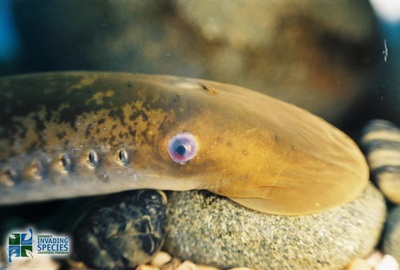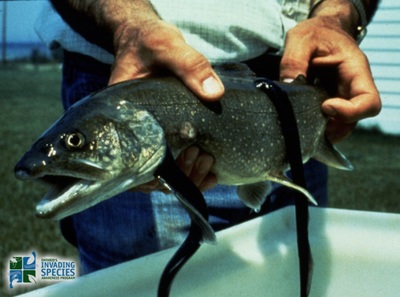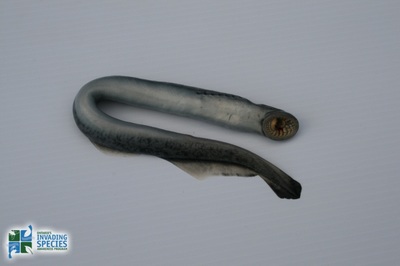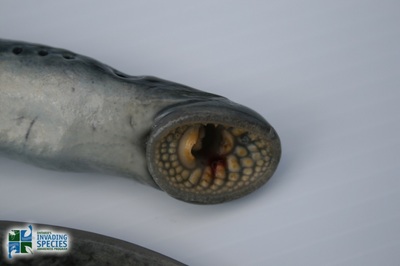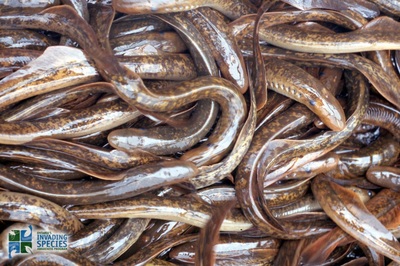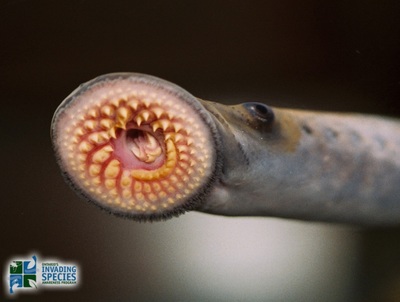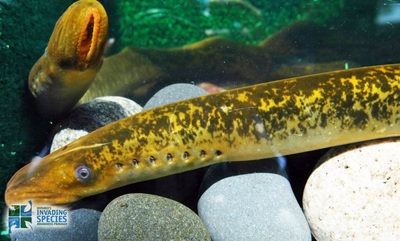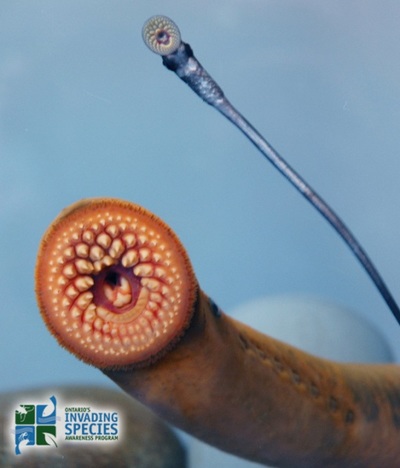Sea Lamprey
|
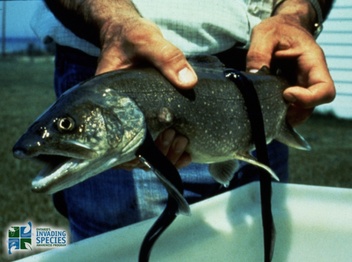
The sea lamprey is a primitive, eel-like fish native to the northern Atlantic and the Baltic 0cean, western Mediterranean and Adriatic seas. Sea lampreys invaded the Great Lakes in the early 20th century through shipping canals.
In their native range, lampreys live part of their lives in salt water, but they have adapted to living entirely in fresh water in the Great Lakes. As adults they spawn in rivers and streams. The eggs hatch into larvae that live on organic matter in stream bottoms until they transform into parasites that migrate downstream to lakes. The adult lampreys spend 12 to 20 months feeding on the blood of other lake-dwelling fish, until they are ready to travel upstream to spawn. The complete life cycle usually lasts five to nine years.
In their native range, lampreys live part of their lives in salt water, but they have adapted to living entirely in fresh water in the Great Lakes. As adults they spawn in rivers and streams. The eggs hatch into larvae that live on organic matter in stream bottoms until they transform into parasites that migrate downstream to lakes. The adult lampreys spend 12 to 20 months feeding on the blood of other lake-dwelling fish, until they are ready to travel upstream to spawn. The complete life cycle usually lasts five to nine years.
Range
|
The native range of the sea lamprey includes the Atlantic coast of North America from Newfoundland to northern Florida, the Atlantic coast of Europe, and the Baltic, western Mediterranean and Adriatic seas. Today sea lampreys are also found in all of the Great Lakes. Sea lamprey larvae live in Great Lakes tributaries that have suitable habitat until they become juveniles or "transformers."
|
Impacts of Sea Lamprey in the Great Lakes
|
The devastating impact of the sea lamprey on Great Lakes sport, commercial and Aboriginal fisheries in the 1940s and 50s led Canada and the United States to form the Great Lakes Fishery Commission in 1955. Since then the commission has led a program to assess and control the species using measures that target different stages of its life cycle. These include chemicals that selectively kill lamprey larvae, and barriers and traps that prevent adult lampreys from moving upstream to spawn.
Although it is likely impossible to eliminate the sea lamprey from the Great Lakes, ongoing efforts to control the species have reduced populations by 90 per cent. Unfortunately, the remaining sea lampreys continue to affect native fish species.
|
How to Identify Sea Lamprey |
Adults:
Similar native species include silver lamprey (Ichthyomyzon unicuspis), chestnut lamprey (I. castaneus), northern brook lamprey (I. fossor), American brook lamprey (Lampetra appendix) and American eel (Anguilla rostrata). |
Downloads
|
| ||||||||||||
OFAH/OMNR Invading Species Awareness Program. (2012). Sea Lamprey. Retrieved from:http://www.invadingspecies.com. This factsheet may be reproduced for non-commercial purposes.

